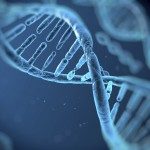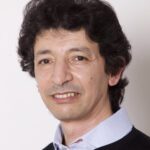Link to Pubmed [PMID] – 24920589
Link to HAL – pasteur-01236114
Link to DOI – 10.1073/pnas.1405322111
Proceedings of the National Academy of Sciences of the United States of America, 2014, 111 (25), pp.9307-12. ⟨10.1073/pnas.1405322111⟩
A detrimental perceptive consequence of damaged auditory sen-sory hair cells consists in a pronounced masking effect exerted by low-frequency sounds, thought to occur when auditory threshold elevation substantially exceeds 40 dB. Here, we identified the submembrane scaffold protein Nherf1 as a hair-bundle component of the differentiating outer hair cells (OHCs). Nherf1 −/− mice dis-played OHC hair-bundle shape anomalies in the mid and basal co-chlea, normally tuned to mid-and high-frequency tones, and mild (22–35 dB) hearing-threshold elevations restricted to midhigh sound frequencies. This mild decrease in hearing sensitivity was, however, discordant with almost nonresponding OHCs at the co-chlear base as assessed by distortion-product otoacoustic emissions and cochlear microphonic potentials. Moreover, unlike wild-type mice, responses of Nherf1 −/− mice to high-frequency (20–40 kHz)


